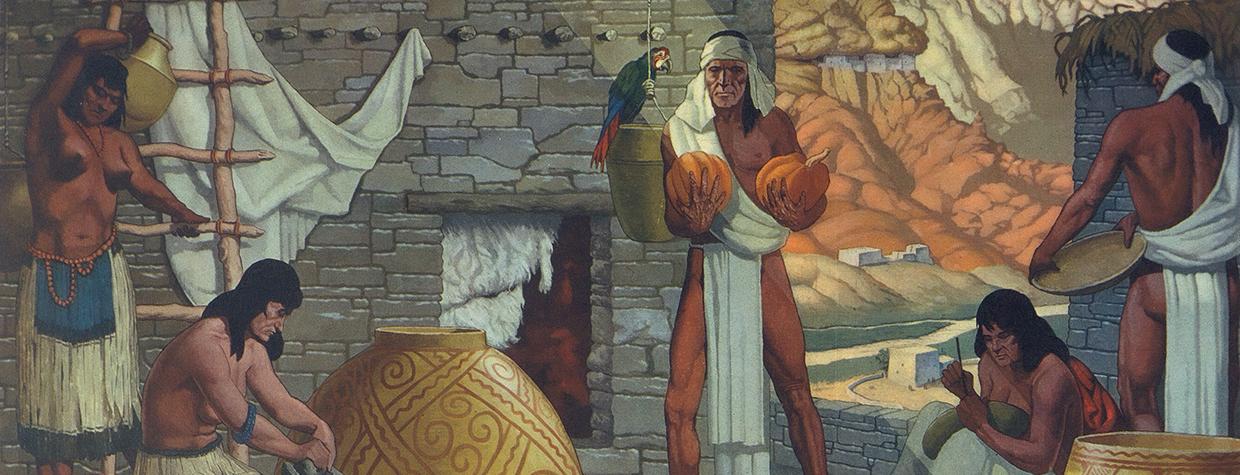Jay Datus was only 23 when he got the opportunity of a lifetime: to paint murals inside the Arizona State Library in the 1930s. It was an important milestone in the career of Datus, who was born in Michigan in 1914 and became known as an “Arizona muralist” for his vivid depictions of the state’s history and culture.
The library assignment was a Works Progress Administration project during the Great Depression, and Datus spent two years doing research before starting to paint. The finished project, collectively titled Arizona Pageant of Progress, was featured in the September 1944 issue of Arizona Highways, which called it “an epic in oils” that “delved deep into the prehistoric and ancient civilizations which many hundreds of years ago inhabited the great Southwest.”
The mural project — made up of four main panels, plus four side panels — displays in intricate detail the hardships of present-day Arizona’s prehistoric civilizations and highlights the significance of American Indians and Spanish conquistadores in shaping the state’s culture. It remains on display at the library today.
Some of Datus’ other prominent works graced the walls of local banks. One of his largest projects, Foundations of Confidence, was a series of 13 murals installed in the mid-1950s in the lobby of the First National Bank building near Central Avenue and Van Buren Street in Phoenix. Those murals illustrate Phoenix’s human history, from Indigenous inhabitants to modern-day construction workers. Arizona Public Service Co. later purchased the building, and in 1997, it donated the murals to the Mesa Southwest Museum, which later became the Arizona Museum of Natural History.
Datus was a fixture in the Phoenix arts community in the mid-20th century. He founded and operated the Kachina School of Art, which offered programs for adults and children in a variety of artistic media. He also served on the Heard Museum’s board of directors, helped develop what now is the Phoenix Art Museum and wrote an art column for The Arizona Republic. He died in 1974.

